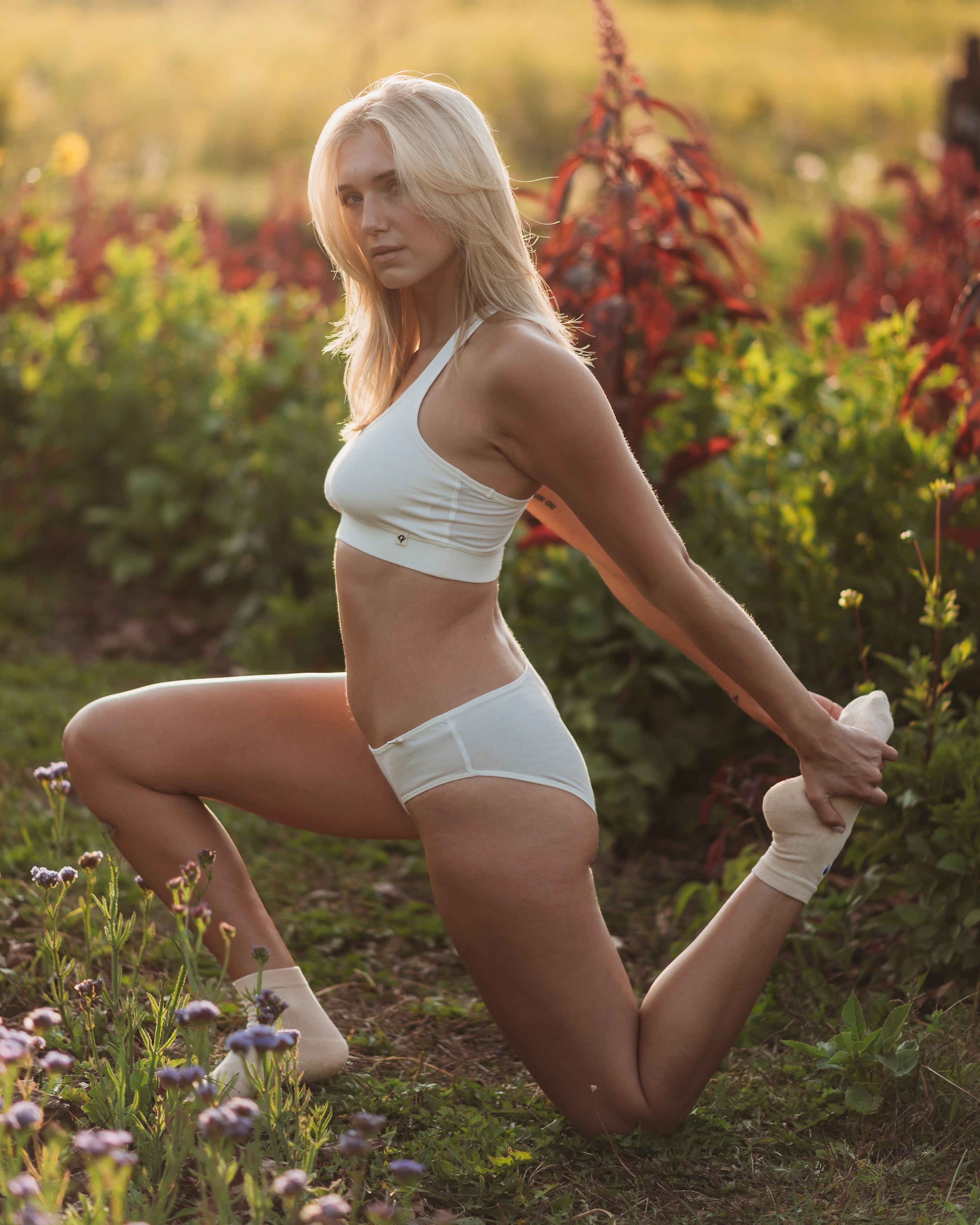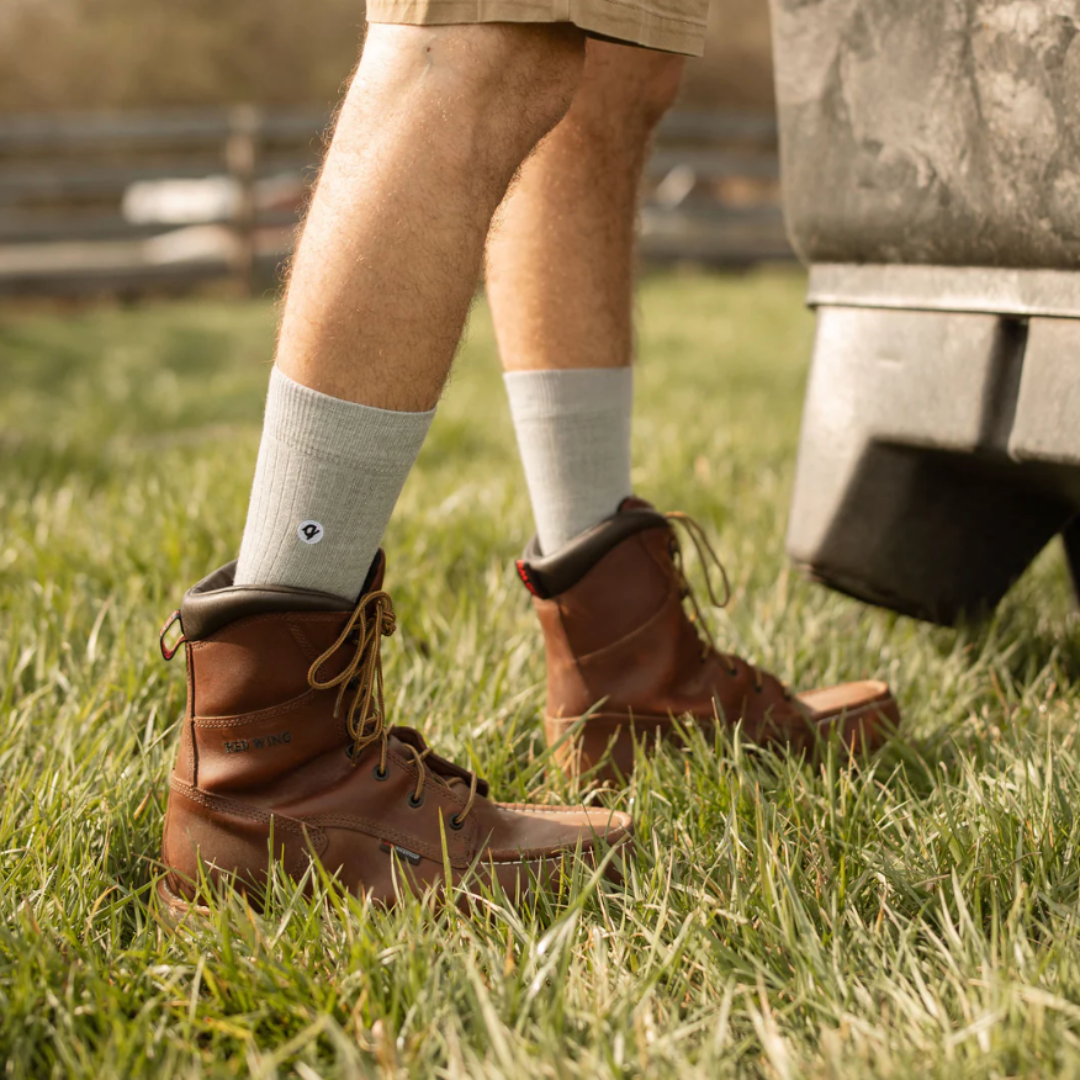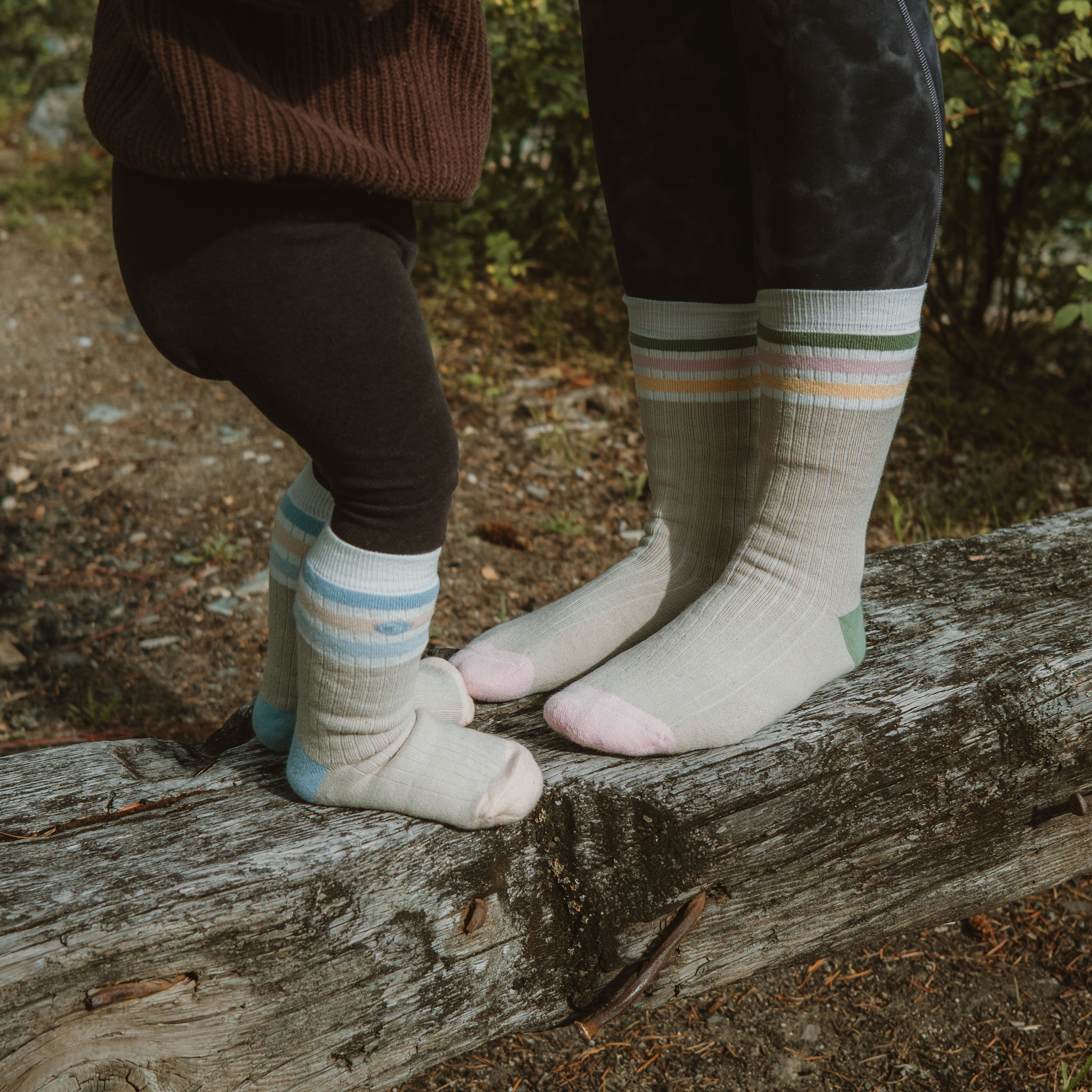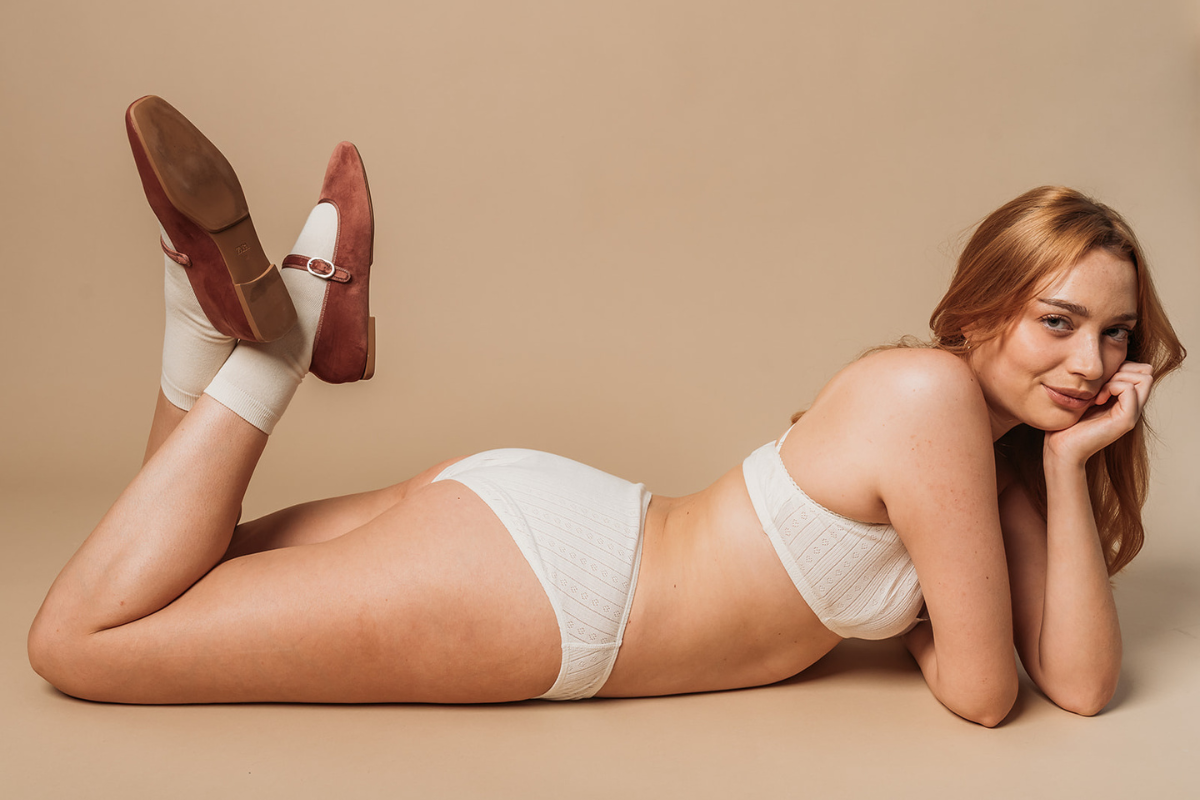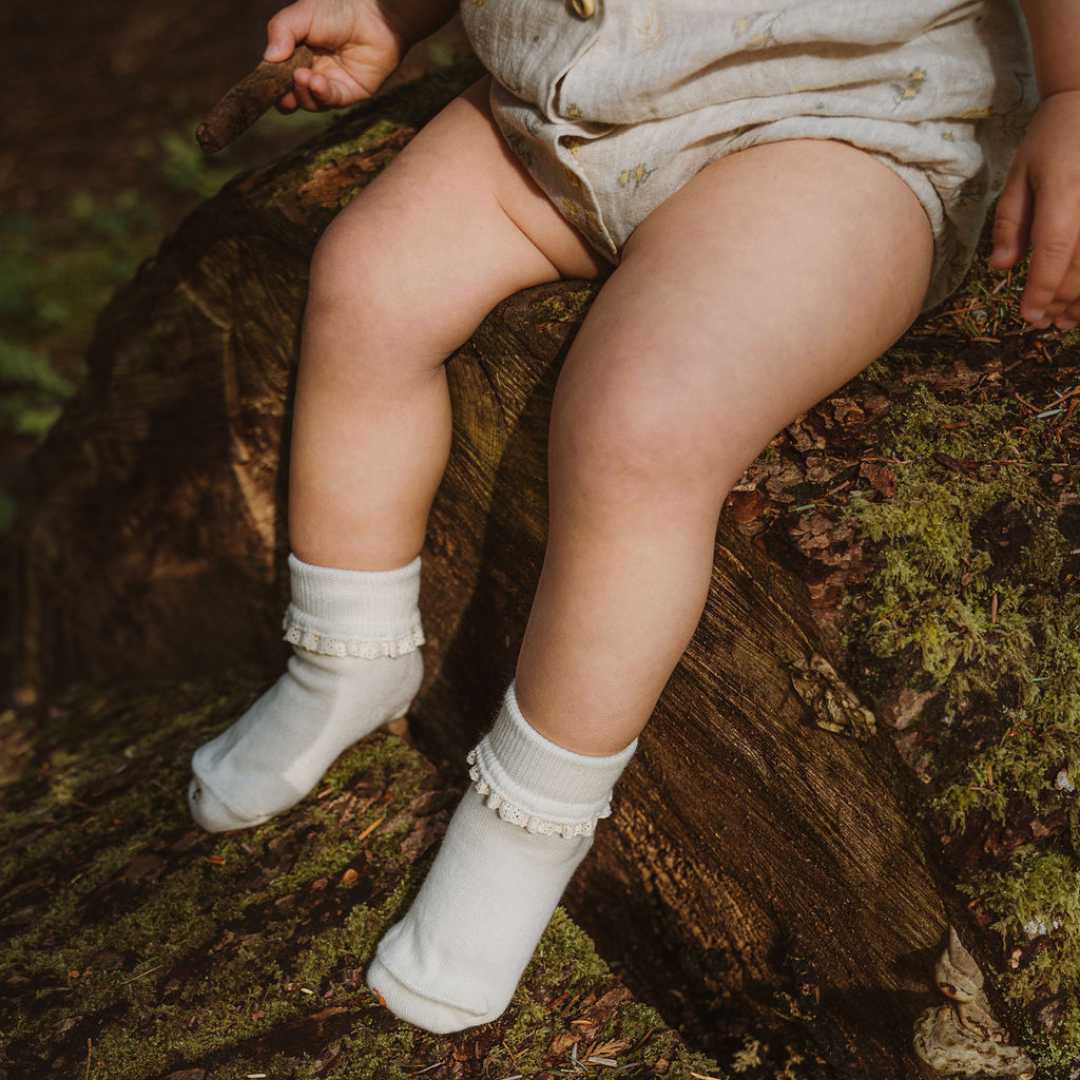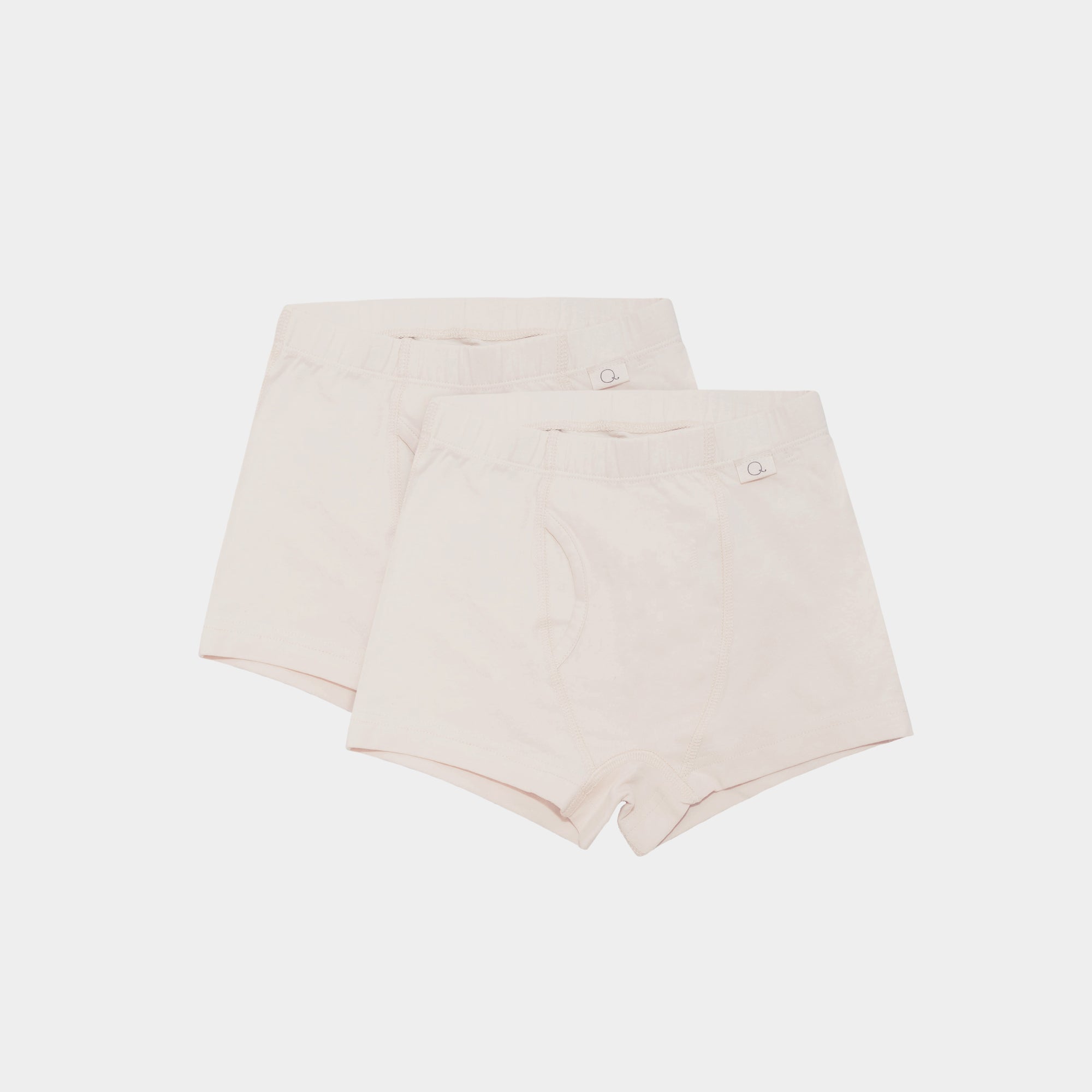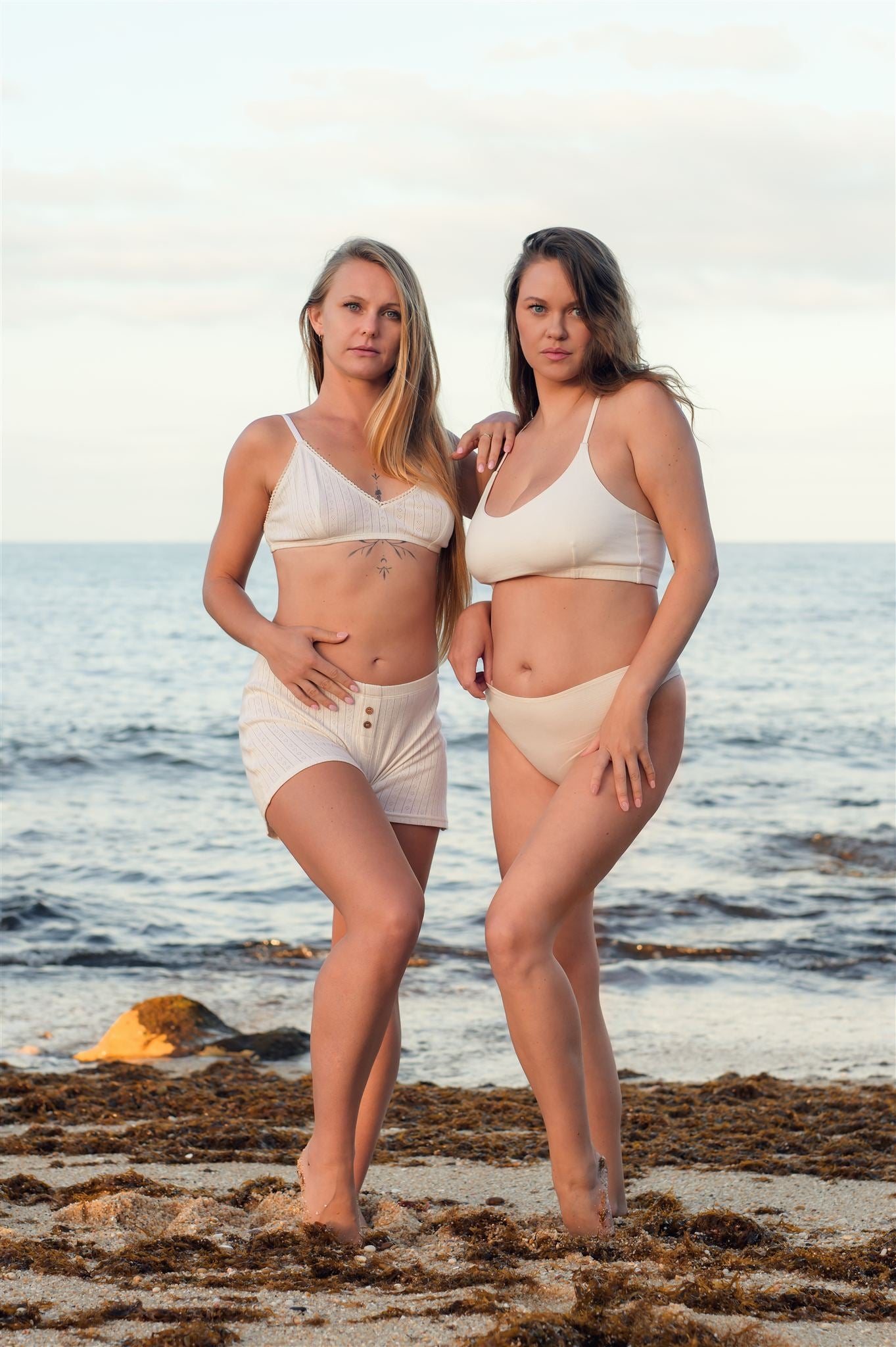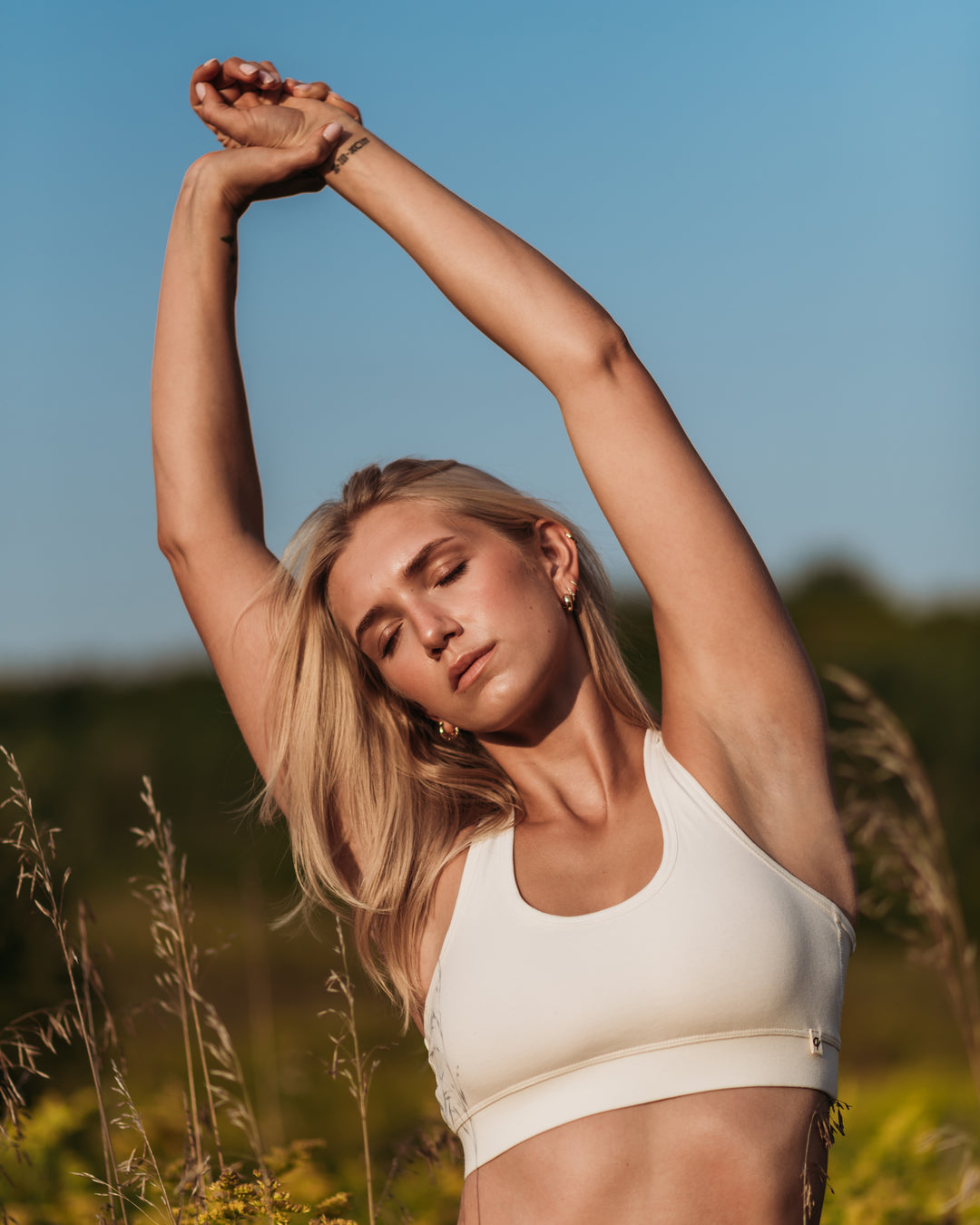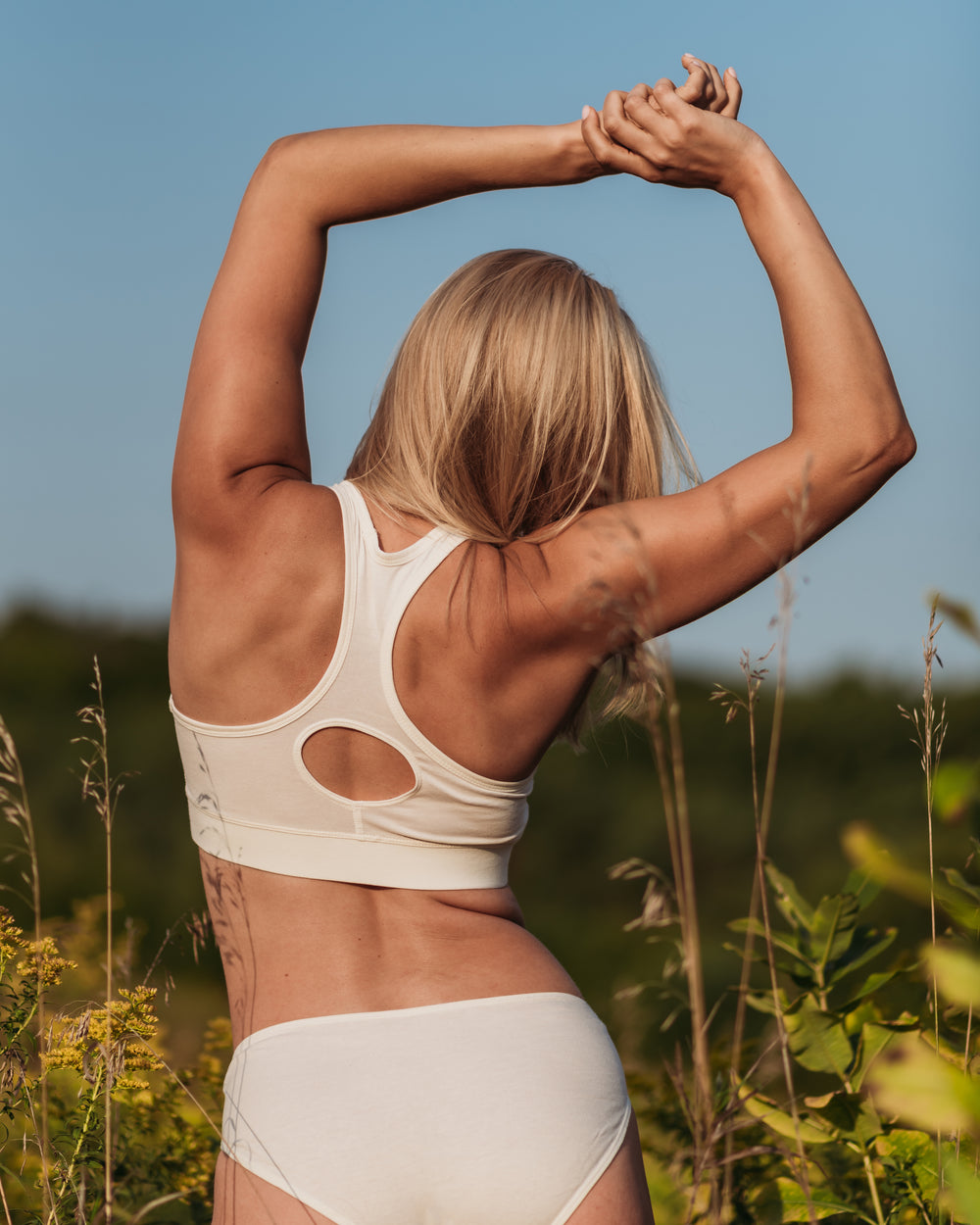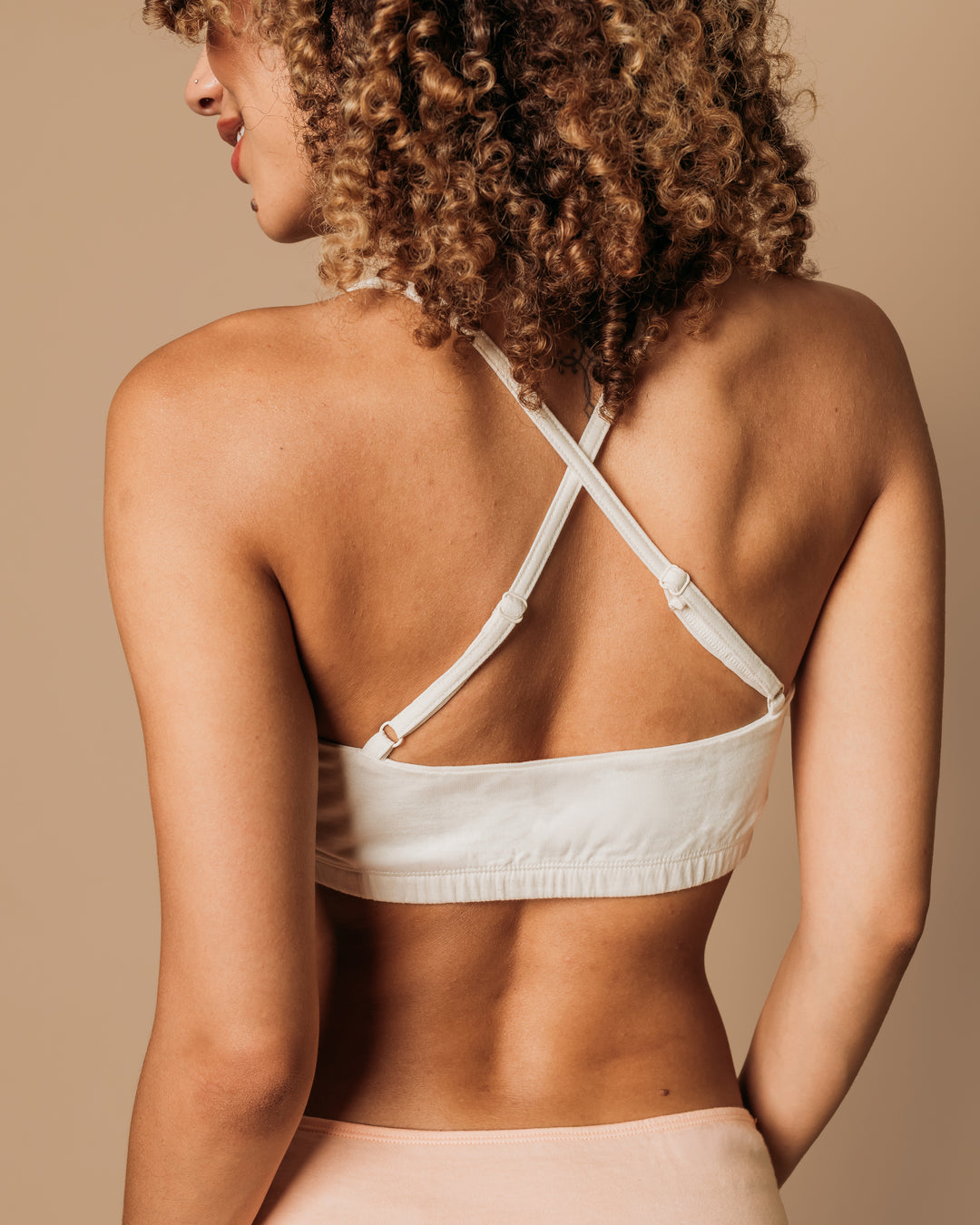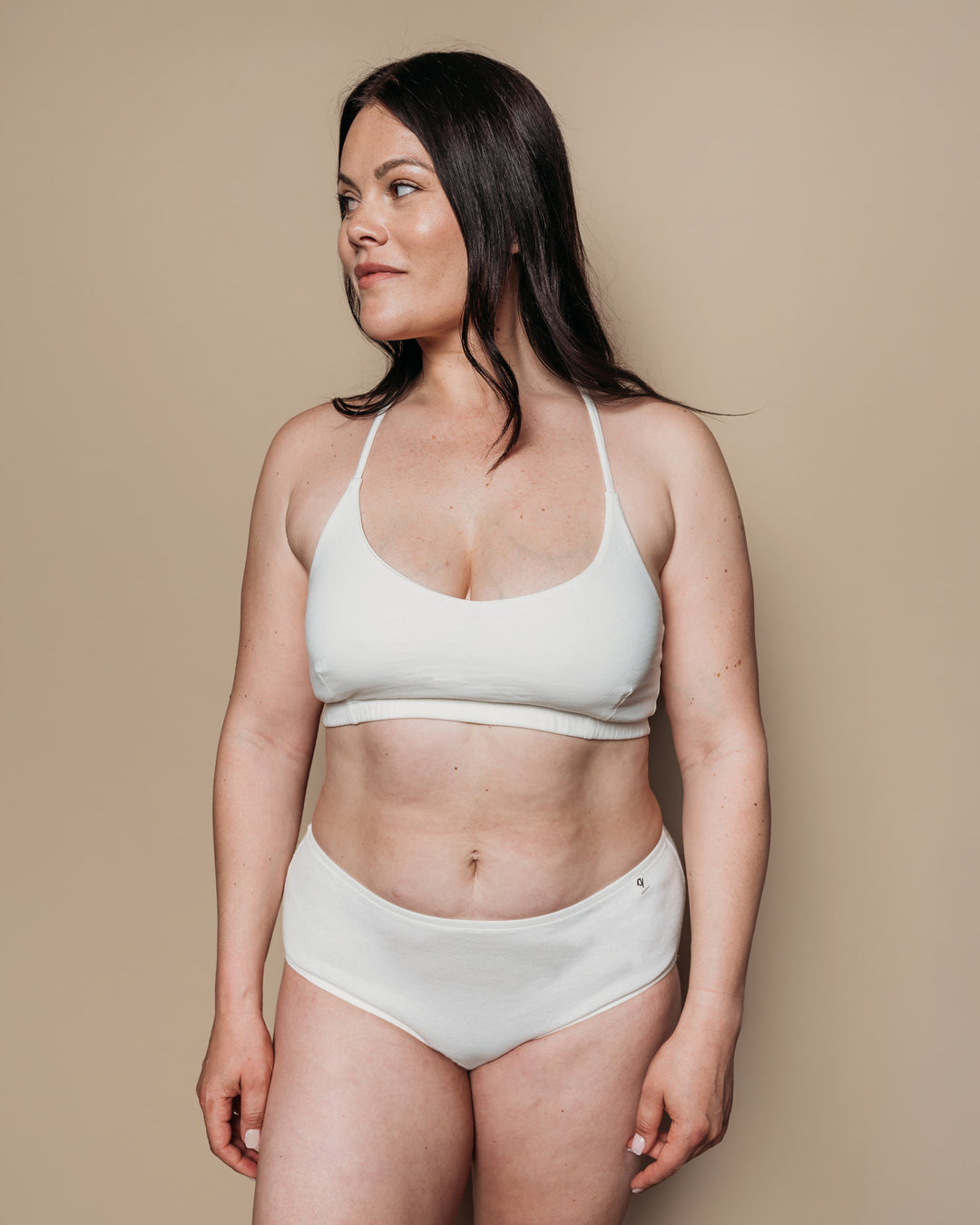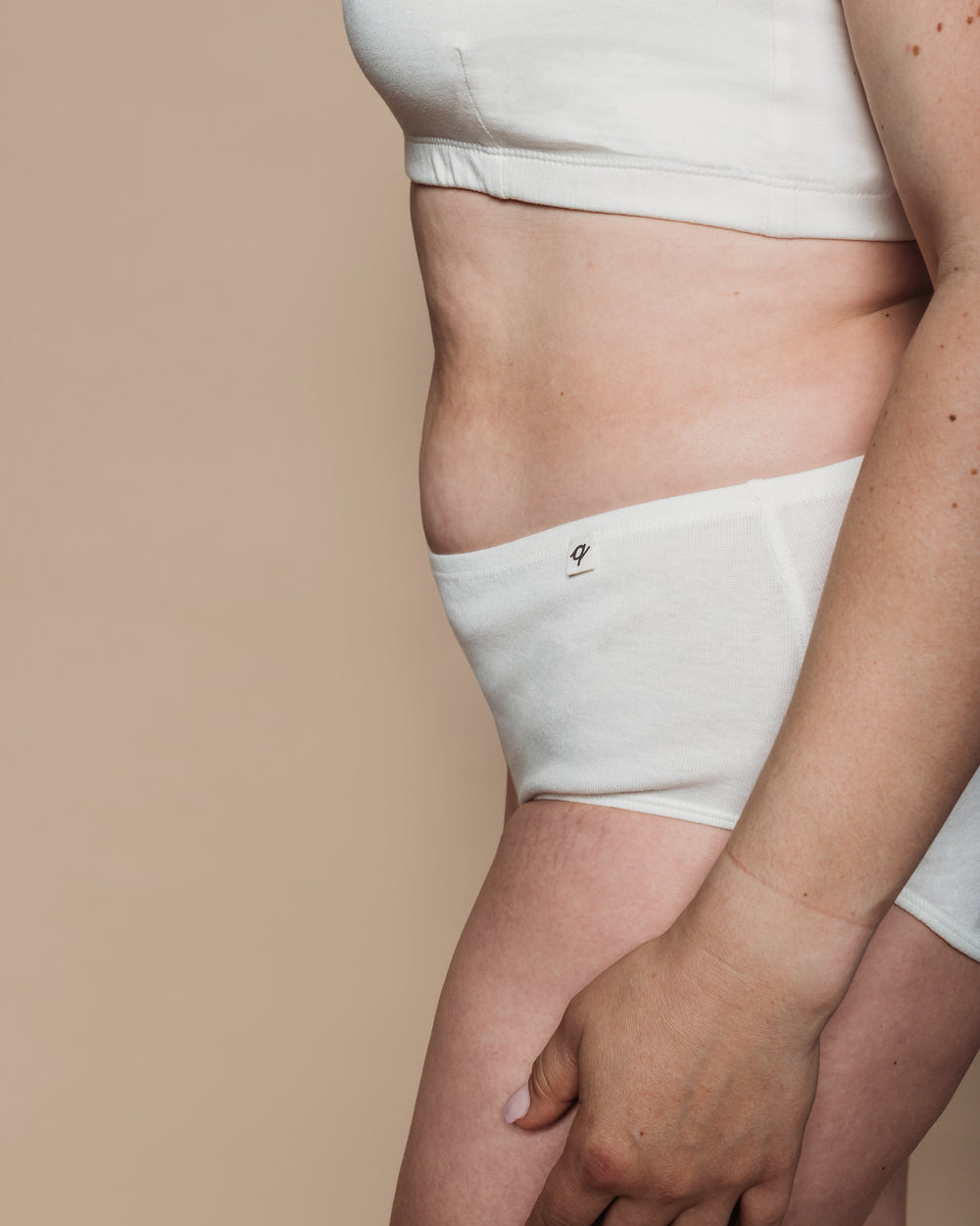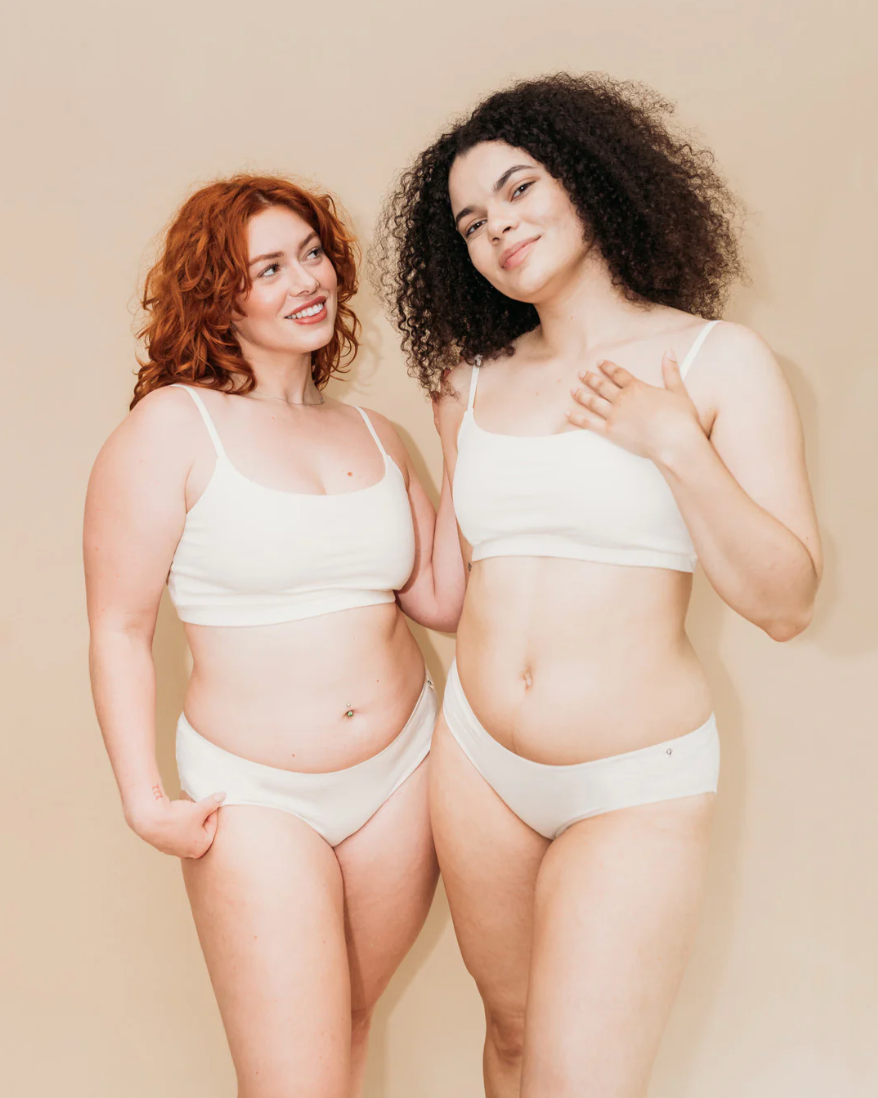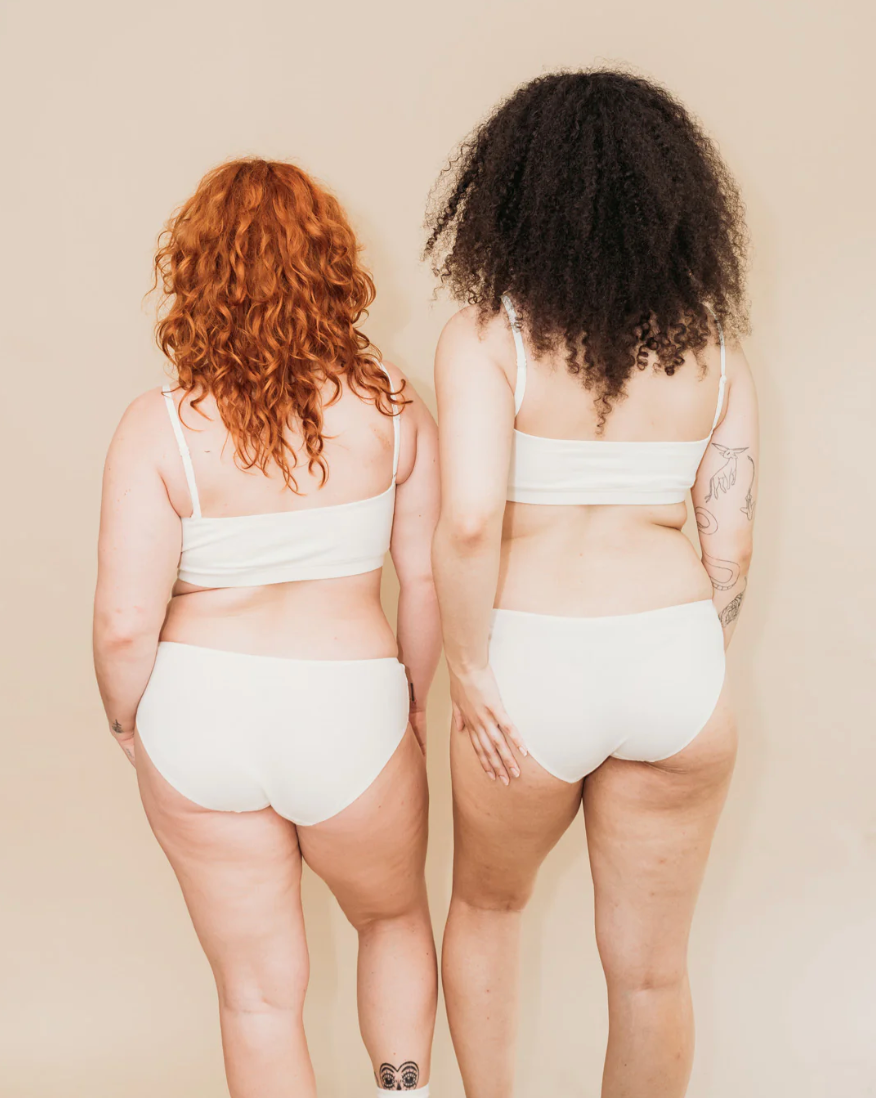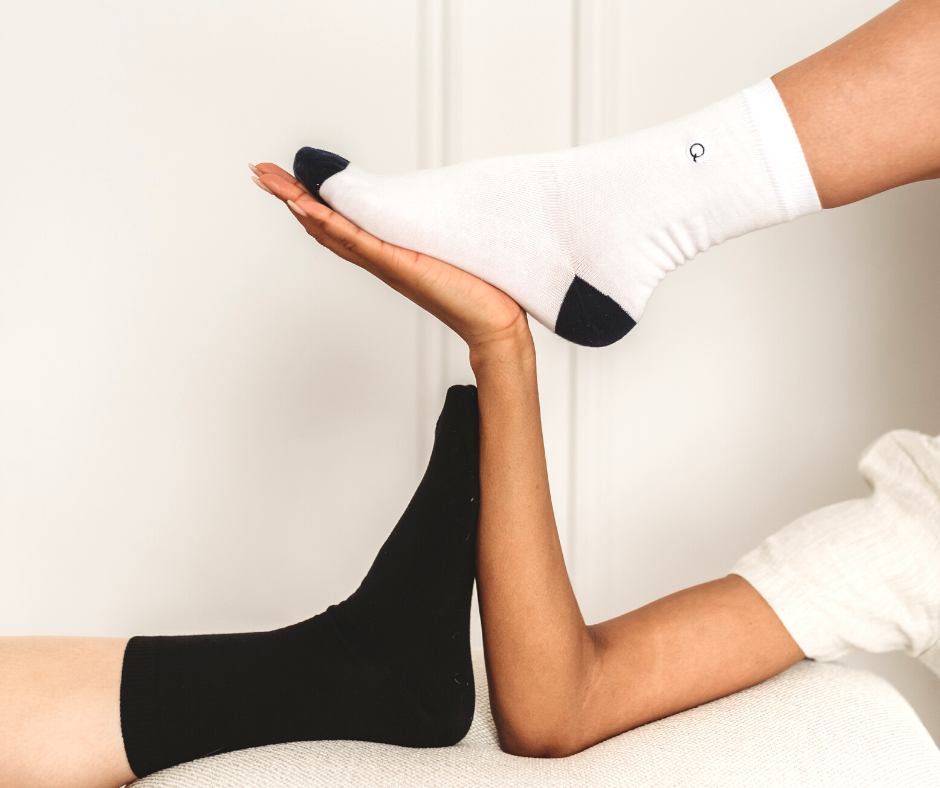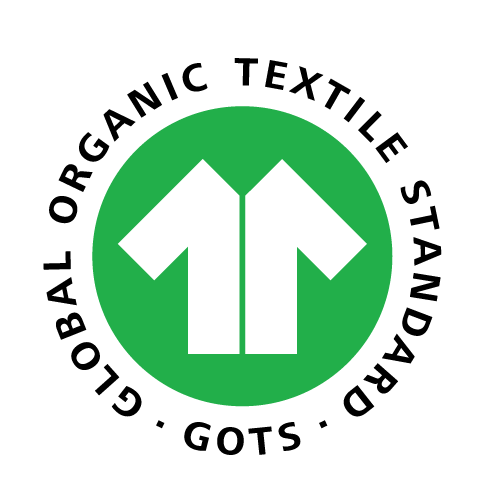
Why We Chose Undyed Organic Cotton
When I first started Q for Quinn, it was because I couldn’t find socks gentle enough for my son’s eczema-prone skin. That search led me to create basics that put sensitivity, safety, and comfort above all else.
Over the years, one question has guided almost everything we make: what’s the gentlest version of clothing we can create? That question eventually led us to undyed organic cotton. It wasn’t part of our very first collection, but it felt like a natural evolution of our mission to make clothing that truly cares for people and the planet.
Why Undyed?
Even when you’re using low-impact or GOTS-approved Azo-Free dyes (which we do for our colored styles), there’s still a process involved: water, energy, and chemicals, even if they’re tightly regulated. We wanted to see what would happen if we stripped things back to their simplest form.
Undyed organic cotton skips the dyeing stage altogether, which means:
- No added colorants or finishing agents that can irritate skin.
- Reduced water and chemical use in production (according to the European Parliament, dyeing is estimated to account for up to 20% of global water pollution).
- A softer, more natural feel that’s as close to cotton on the plant as possible.
For anyone with sensitive skin, eczema, or allergies, undyed cotton can be one of the gentlest options available. Undyed clothes avoid the use of any additional allergens or irritants, providing a much gentler option for those prone to skin reactions and allergies.
Cotton's Natural Colors
Here’s something I found fascinating during our research: cotton doesn’t just grow white.
Naturally colored cotton comes in warm browns, soft greens, and creamy neutrals. These colors are completely plant-derived and have been grown and spun into fabric for thousands of years.
Modern undyed cotton often appears in subtle off-white or ivory shades, though breeders and small farms are reviving naturally pigmented cottons for textile use. The beauty of these fibers is that they require no dye, and their shades don’t fade with washing like conventional dyed fabrics sometimes do.
A Gentler Process for People and Planet
The dyeing and finishing stages are some of the most resource-intensive parts of making fabric. By skipping them, undyed organic cotton reduces the overall footprint of each garment.
- Water savings: Textile dyeing can consume up to 200 tons of water per ton of fabric. Skipping this step significantly cuts down on water waste.
- Chemical reduction: Many conventional dyes use toxic fixatives and heavy metals; even when not harmful to wearers, they’re harmful when released into waterways.
- Energy use: Less processing means lower energy demand throughout production.
Undyed cotton isn’t a silver bullet, but it’s one of those small but powerful steps toward more responsible clothing.
Staying True to Our Roots
Undyed organic cotton collection wasn’t our first step, but it’s one we’re proud of. It ties directly back to why I started this company in the first place: to create clothing I could trust against my child’s skin.
Today, it’s also about creating pieces you can trust; soft, breathable, versatile, and uncomplicated. Sometimes the best design is no design at all, and undyed cotton proves that.
Natural, Dye Free Cotton Basics
Go clean where it matters most with our bestselling underwear for women.




